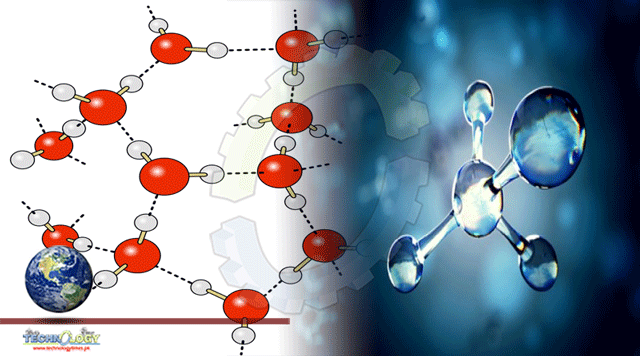An international team of experimental physicists from the United States and Sweden has made the first direct observation of how hydrogen atoms in water molecules tug and push neighboring molecules when they are excited with laser light.

Each water molecule contains one oxygen atom and two hydrogen atoms, and a web of hydrogen bonds between positively charged hydrogen atom in one molecule and negatively charged oxygen atoms in neighboring molecules holds them all together.
This intricate network is the driving force behind many of water’s inexplicable properties, but until recently, physicists were unable to directly observe how a water molecule interacts with its neighbors.
“The low mass of the hydrogen atoms accentuates their quantum wave-like behavior,” said Dr. Kelly Gaffney, a physicists in the Stanford Pulse Institute at SLAC National Accelerator Laboratory.
“This study is the first to directly demonstrate that the response of the hydrogen bond network to an impulse of energy depends critically on the quantum mechanical nature of how the hydrogen atoms are spaced out, which has long been suggested to be responsible for the unique attributes of water and its hydrogen bond network.”
Until now, making this observation has been challenging because the motions of the hydrogen bonds are so tiny and fast.
The new experiment overcame that problem by using SLAC’s MeV-UED, a high-speed ‘electron camera’ that detects subtle molecular movements by scattering a powerful beam of electrons off samples.
The authors created 100-nm-thick jets of liquid water and set the water molecules vibrating with infrared laser light.
Then they blasted the molecules with short pulses of high-energy electrons from MeV-UED. This generated high-resolution snapshots of the molecules’ shifting atomic structure that they strung together into a stop-motion movie of how the network of water molecules responded to the light.
The snapshots, which focused on groups of three water molecules, revealed that as an excited water molecule starts to vibrate, its hydrogen atom tugs oxygen atoms from neighboring water molecules closer before pushing them away with its newfound strength, expanding the space between the molecules.
“Although the so-called nuclear quantum effect has been hypothesized to be at the heart of many of water’s strange properties, this experiment marks the first time it was ever observed directly,” said Professor Anders Nilsson, a researcher at Stockholm University.
“For a long time, researchers have been trying to understand the hydrogen bond network using spectroscopy techniques,” said Professor Jie Yang, a researcher at Tsinghua University.
“The beauty of this experiment is that for the first time we were able to directly observe how these molecules move.”
Originally Published By SciNews